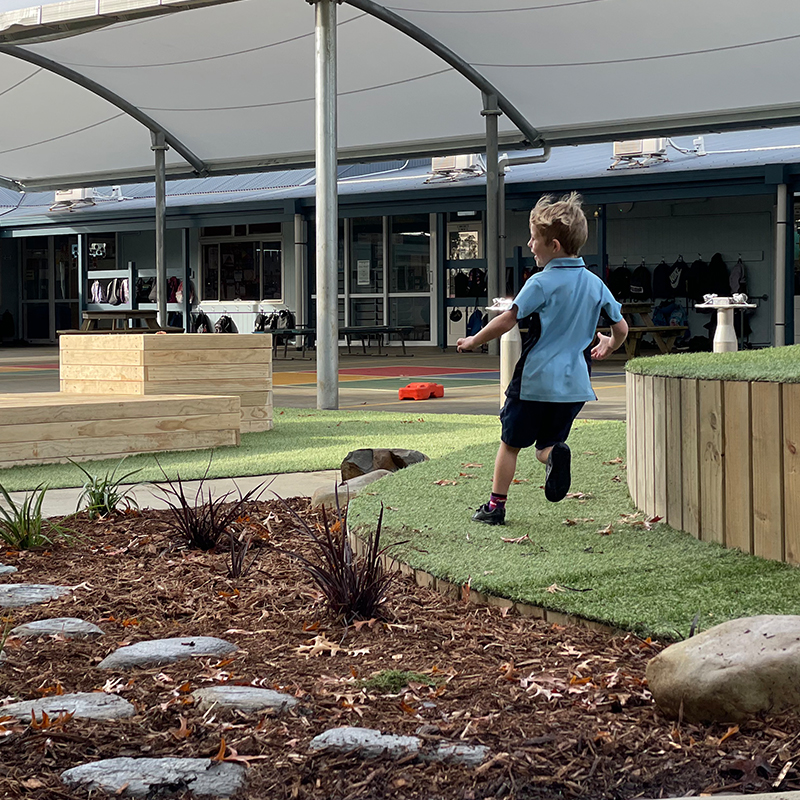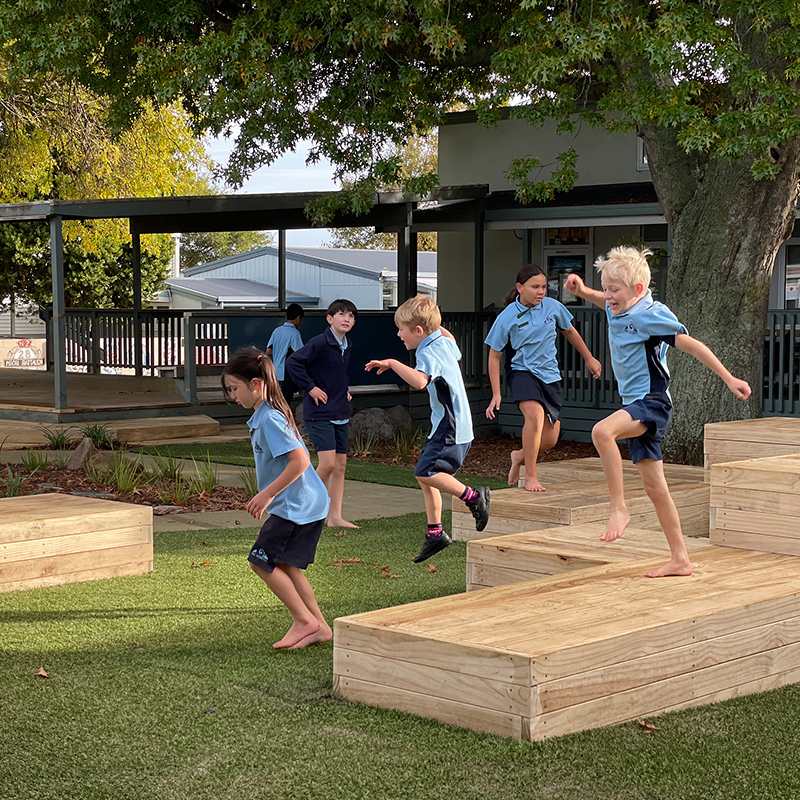More schools across New Zealand are recognising the benefits of creating outdoor learning environments where kiwi kids can learn through play. We look at learning through play, its benefits, and how primary schools facilitate outdoor play-centred learning as part of the curriculum.
What is an Outdoor Learning Environment?
Typically, outdoor play in school is viewed as a reward for learning; kids take to the playground at lunchtime for a break. Recently, more primary schools have involved play-centred learning in their curriculum, combining both classroom lessons with outdoor play. Education does not stop when you leave the classroom. More primary schools recognise this and are creating outdoor learning environments to facilitate outdoor learning as part of the curriculum.
How Does Outdoor Learning Fit Into the Curriculum?
There’s more to it than just random playing; an outdoor learning space encourages the development of an active and engaged brain. Studies highlight the positive impact that a balance of learning styles provides young children. The interactive nature of outdoor play nurtures curiosity while improving overall focus when students return to the classroom.
Nature is a crucial element of education. Outdoor learning environments provide a space for children to move, socialise, and learn through hands-on experience. The previously mentioned study draws attention to academic performance. Schools that strayed from the traditional design, choosing to construct creative, nature-filled areas for outdoor play, proved to have more academic success among students.


What Does an Outdoor Learning Space Look Like?
Outdoor learning environments should be open spaces, utilising different textures, shapes, and colours, with a core focus on natural elements, such as fruit trees and small gardens. These spaces offer exploration, movement, and climbing to encourage a more physical and mentally engaging play experience.
These spaces should have safety at the forefront; however, our kids must learn to judge risks and make conscious, well-thought-out decisions on their next move. Scrapes and bruises are never fun, but they’re always a learning experience.
Rocks, wooden planks and blocks, sandpits, and various levels are all fantastic inclusions for an interactive and stimulating outdoor learning experience. Outdoor learning environments typically use the Earth’s resources to create a space with a few interactive elements spread amongst the area; climbing structures, steppingstones, and more. Plants, grass, and trees help connect children to nature and can expand their understanding of the co-dependent relationship between people and nature.
Ultimately, the idea is to provide children with a space they can be active, run, climb, build, and nurture their imaginations and creativity. To have class outside is something we’ll likely see more of in our primary schools.
Benefits of Outdoor Learning for Children
Creativity isn’t Taught, it’s Nurtured
Innovatively-designed outdoor spaces encourage children to use their imagination and creativity. It allows children to move beyond the walls of a standardised system, helping them understand the unstructured nature of life.
It’s a meaningful way to teach hands-on skills. The space allows children to explore, solve problems, and naturally discover how things work. A space for kids to express themselves and be creative is essential.
Developing Social Skills
The ability to leave a desk and learn in a more interactive environment allows kids to refine their social skills. They have the opportunity to speak to their teacher or peers in different environments and situations. Taking the lesson beyond a classroom aids children in developing more self-awareness and improving their interactions with others.
Engaging Lessons & Improved Retention of Information
Imagine that you’re teaching lessons about biology in nature and how plants grow. Why not allow half the class time for outdoor learning. Kids can identify plants, spot bugs, and even contribute to the growth of trees around the school. The combination of learning inside and outside the classroom improves long-term focus in students and will typically expand their interest in a particular subject.
Teaching to Respect the Earth
The outdoors teaches kids incredibly healthy habits, from keeping fit to encouraging conservation. The relationship between people and the planet is an important one to understand. Allowing kids to interact with the natural world as a part of their education is a sure-fire way to develop a long-lasting love and respect for the Earth.
Passive Exercise
A focus on getting kids outside encourages exercise in an unstructured way. It allows kids to use their energy through fitness, but without a focus on fitness itself. It enables kids to get exercise and some vitamin D without the competitive or tiring nature of sports and P.E. This passive exercise through movement will translate to more engagement and focus inside the classroom.
Cognitive Development
Other studies have shown the benefits of outdoor learning environments on children with ADHD. Regular exposure to nature and its sensory elements has indicated the ability to reduce symptoms of ADHD in kids and relieve stress and anxieties. This can helps kids feel more relaxed and focused in other areas of school and is fantastic for improving cognitive development.
Create an Outdoor Learning Environment with Playscape
Outdoor classrooms are equally vital to child development as traditional classrooms are. More primary schools across New Zealand are trading in the standard steel-pole playground for a natural and engaging outdoor learning environment. The team at Playscape are experts at designing creatively engaging play areas to unlock new ways of learning. Our goal is to make learning more playful and playtime more educational. Get in touch with the Playscape team to get your new play space underway.